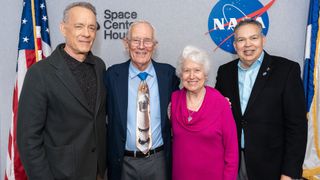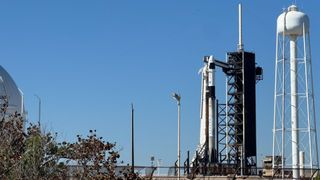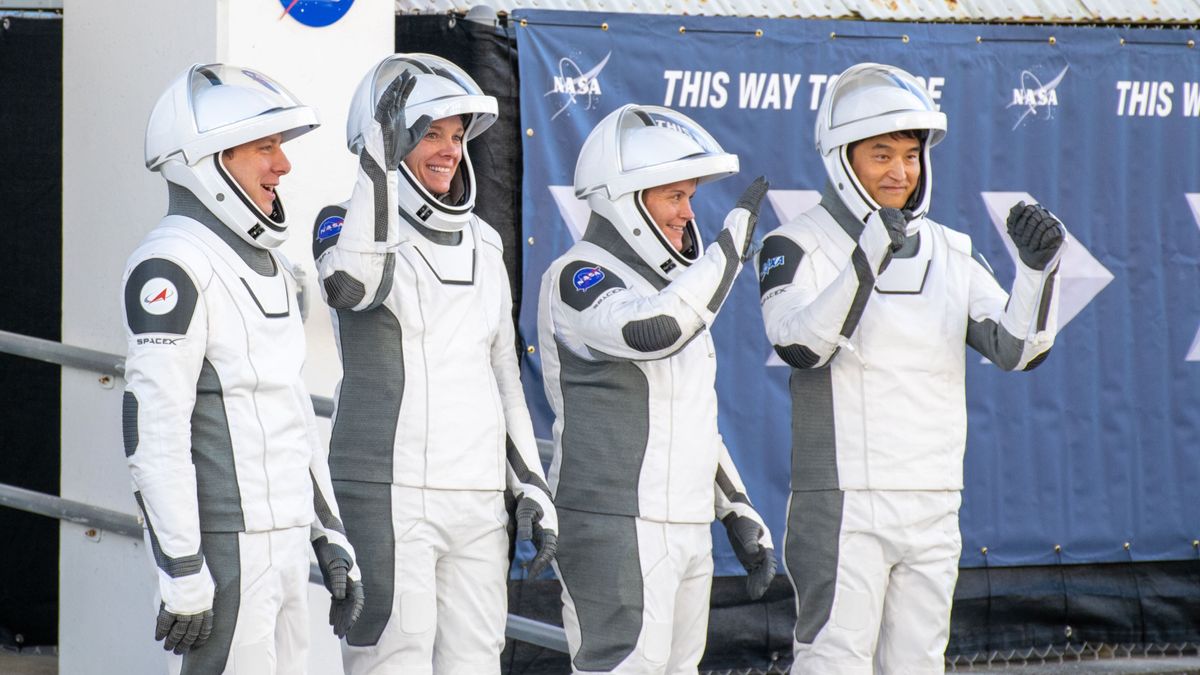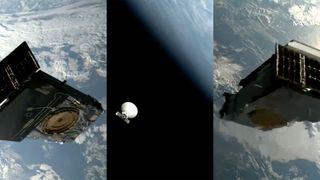Former Google CEO Eric Schmidt has assumed the top job at an ambitious launch startup. Schmidt, who led Google from 2001 to 2011, has been named CEO at Relativity Space, a California company that’s building a rocket to compete with SpaceX and other major players in the launch industry. Schmidt, who’s worth about $33 billion, has also made a “significant” financial investment in Relativity Space, according to The New York Times, which broke the story on Monday (March 10). Former CEO & Chairman of Google Eric Schmidt speaks at Chainlink’s…
Read MoreCategory: Space Stations
Space stations in orbit or planned
Tom Hanks at ‘Moonwalkers’ film premiere predicts getting busy on moon
Tom Hanks said he knows for certain there are two things that are going to happen in the future of space exploration. One, the day will come at some point when astronauts land on the moon and are greeted by other humans just like them, signaling that we have moved from the moon being a place we just visit to it being a home. The other — well, it is probably best to hear it straight from him. “Forgive my language, but someone’s going to get knocked up,” said Hanks,…
Read MoreThe 1st full live-action ‘Lilo and Stitch’ trailer just dropped and fine, we admit it: it looks fantastic (video)
Disney has just dropped the first full trailer for the live-action remake of “Lil & Stitch.” “Lilo and Stitch,” Disney’s animated sci-fi comedy from 2002, was a bit of a departure from traditional Disney fare, featuring a spunky six-year-old Pacific Islander main character and strange experimental alien plunked down in a beachside palm tree-filled setting. The risk has paid off as it’s become one of the studio’s most beloved features two decades later, and now we’ve got a live-action remake on the way. Now we’ve got a lively new trailer…
Read MoreSpaceX calls off Crew-10 astronaut launch for NASA due to hydraulics issue (video)
SpaceX won’t launch its next astronaut mission for NASA today (March 12) after all. The company had planned to send the four-person Crew-10 mission toward the International Space Station (ISS) atop a Falcon 9 rocket from Kennedy Space Center in Florida this evening at 7:48 p.m. EDT (2348 GMT). About 45 minutes before liftoff, however, SpaceX called the attempt off due to a hydraulics issue with the transporter-erector, the structure that hauls the Falcon 9 to the pad and supports it once it’s there. “Great working with you today,” Crew-10…
Read MoreSpaceX Crew-10 astronauts depart for launch pad ahead of liftoff (video, photos)
Update for 7:50 pm ET: SpaceX called off its planned launch of the Crew-10 astronaut mission for NASA due to a hydraulics issue with a clamp device on ground equipment securing the crew’s Falcon 9 rocket to the launch pad. Read our wrap story on today’s launch attempt. CAPE CANAVERAL, Fla. — Members of the SpaceX Crew-10 mission are bound for the launch pad ahead of their journey to space. NASA astronauts Anne McClain and Nichole Ayers, as well as JAXA (Japan Aerospace Exploration Agency) astronaut Takuya Onishi and Roscosmos…
Read MoreWe found 6 Easter eggs in the ‘Alien: Earth’ shorts revealed at SXSW 2025… at least we hope they’re just Easter eggs
FX’s Alien: Earth makes impact at SXSW | FX – YouTube Watch On The Easter Bunny might not be quite ready for his annual springtime romp, but it’s not too early to check out a cool basket of Easter eggs for the upcoming sci-fi TV series from executive producer/showrunner Noah Hawley (“Fargo”) titled “Alien: Earth.“ Case in point is “The Wreckage,” an interactive promotional installation set up by FX Networks at the SXSW 2025 Film Festival in Austin, Texas over this past weekend to help stir up excitement for this…
Read MoreSpaceX rocket launches NASA SPHEREx space telescope and PUNCH solar probes (video)
There was a glimmer in the air tonight at Vandenberg Space Force Base in California, and it wasn’t only because a SpaceX Falcon 9 rocket took to the skies carrying precious NASA cargo. As the agency’s SPHEREx space telescope and PUNCH solar mission rode toward their orbital stations tonight (March 11) at 11:10 p.m. EST (0310 March 12 GMT), members of mission control appeared elated, onlookers who caught a peek at the liftoff cheered, and the scientists who built these missions exuded a blend of relief and excitement. “I am…
Read MoreWorld’s largest iceberg runs aground in South Atlantic after 1,200-mile journey (satellite photos)
Earth’s largest iceberg has run aground off the coast of South Georgia Island, a common rendezvous spot for large icebergs, new satellite images show. Measuring 1,240 square miles (3,460 square kilometers), the Antarctic iceberg A-23A has come to a grinding halt after a long and winding journey across the Scotia Sea, also known as “iceberg alley.” Satellite images taken at the beginning of March show the iceberg parked on a shallow underwater shelf off the coast of South Georgia Island, which is a British overseas territory in the South Atlantic…
Read MoreLife on Mars? It probably looks like something you’d find in your stomach
This article was originally published at The Conversation. The publication contributed the article to Space.com’s Expert Voices: Op-Ed & Insights. María Rosa Pino Otín is a Professor and researcher of Microbiology, Universidad San Jorge We often forget how wonderful it is that life exists, and what a special and unique phenomenon it is. As far as we know, ours is the only planet capable of supporting life, and it seems to have arisen in the form of something like today’s single-celled prokaryotic organisms. However, scientists have not given up hope…
Read MoreNASA Astronaut Jonny Kim to Discuss Upcoming Launch, Mission
Official portrait of NASA astronaut Jonny Kim, who will serve as a flight engineer during Expedition 73. Credit: NASA NASA will provide interview opportunities with astronaut Jonny Kim beginning at 9 a.m. EDT, Tuesday, March 18, to highlight his upcoming mission to the International Space Station in April. The virtual interviews from Star City, Russia, will stream live on NASA+. Learn how to watch NASA content through a variety of platforms, including social media. Media interested in participating must contact the newsroom at NASA’s Johnson Space Center in Houston no…
Read More








